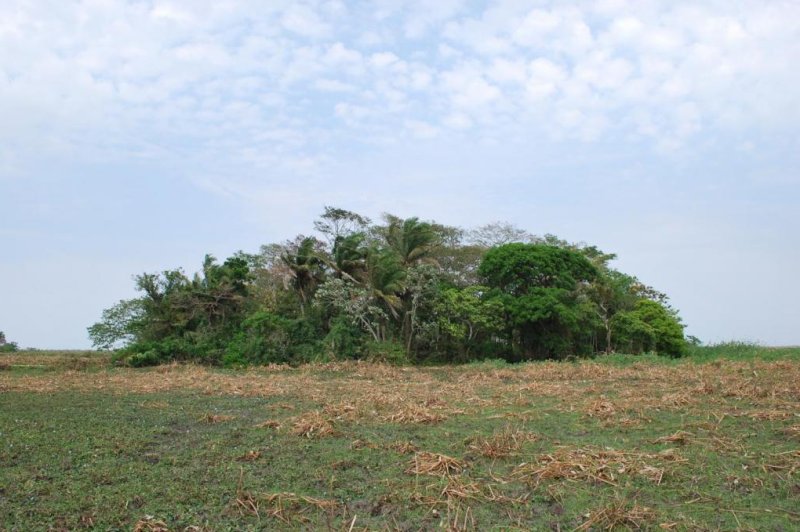Sediment cores fro forest island in Amazonian lowlands of Bolivia suggest humans in the region began cultivating crops during the Early and Middle Holocene. Photo by
José Capriles/Penn State
April 8 (UPI) -- New research suggests southwestern Amazonia was one of several global hotspots for early crop cultivation.
Around the same time, during the early Holocene Epoch, humans began cultivating crops for the first time in different parts of the world. In China, people cultivated rice. In the Middle East, early civilizations started growing pulses and grains. On the other side of the world, in Mesoamerica, people cultivated maize, beans and squash. And in the Andes, humans started growing potatoes and quinoa.
Now, scientists know that around the same time, roughly 10,000 years ago, hunter-gatherers in southwestern Amazonia began cultivating manioc, squash and other edibles, according to a study published Wednesday in the journal Nature.
By analyzing the shapes of island forest plots that dot Bolivia's Llanos de Moxos, a large savannah, researchers found evidence that region's early inhabitants were altering the landscape thousands of years ago.
"We were trying to find a straightforward way to differentiating anthropic forest islands without having to core or excavate each one," José Capriles, assistant professor of anthropology at Pennsylvania State University, told UPI in an email. "Geometry was the first logical idea as many of these are extremely symmetrical."
"In our previous work we had sampled a few of these sites and found that circular forest islands were indeed anthropic so we decided to test in a broader region and although the pattern holds, there is much more complexity involved," Capriles said.
Because the Llanos de Moxos is a giant alluvial plain, it is completely devoid of rock deposits. As a result, archaeological evidence of human habitation is hard to come by.
"Historically and ethnographically, human groups inhabiting this region used mostly organic-based technology including bows and arrows completely made with plant materials and animal materials, feathers and beeswax," Capriles told UPI. "No projectile points are known from this region. Thus, researchers traditionally dismissed any possibility of finding foraging sites there."
However, the earth itself is marked by the presence of humans. In addition to human-shaped forest islands, the savannah also features raised fields, mounds and canals.
After identifying the most promising forest plots, researchers collected and radio-carbon-dated dozens of sedimentary cores. Scientists surveyed the cores for concentrations of silica-based phytoliths, tiny minerals that form inside plants.
Because phytoliths are characterized by the plants they're sourced from, scientists were able to use the tiny minerals to identify plants grown inside the forest islands thousands of years ago. The sediment cores revealed the remnants of manioc plants, the family that includes cassava and yuca -- evidence that early inhabitants of the region began cultivating crops during the Holocene.
"These hunter-gatherers were experimenting with agriculture as early as some of the oldest farmers in the Old World," Capriles said. "As such they tell us that hunter-gatherers in the Americas were very quite sophisticated people."
"They were not just at the mercy of the environment procuring what was available, but had intent in manipulating the landscape and resources in their favor," he said. "They were able to domesticate some of the most important plants the world feeds with today."
The findings are consistent with the results of previous genomic analysis, which identified Amazonia as the home of cassava, sweet potatoes and peanuts.
Capriles and his colleagues plan to continue their archaeological analysis of the Amazonian lowlands, a region scientists suggest is woefully understudied.
"We are very much interested in understanding why some of these socio-ecological systems could have encouraged biodiversity not depressed it, how some of the earliest complex societies in this region evolved, and through what mechanisms some of the early crops eventually made their way to the Andean highlands and beyond," Capriles said.















